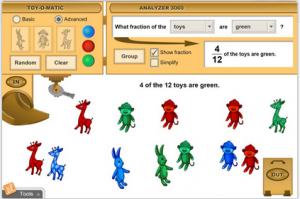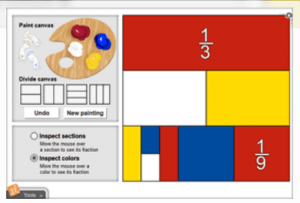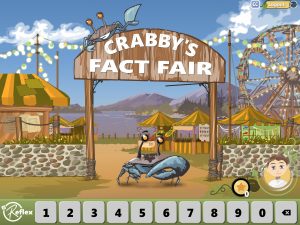
What is Blended Learning?
Blended learning is an educational program when students learn both individually with technology and onsite via traditional instruction, with all activities integrated into one learning experience. In a brick-and-mortar classroom in the United States, the rotational model of blended learning is the one most commonly used.
The rotational model is a mix of digital and traditional instruction. Teachers use a variety of teaching methods and practices to individualize the student learning experiences. The rotational model uses benchmarks to track student performance and requires teachers to analyze student data to deliver customized instruction to students.
Instruction in a Blended Rotation Classroom
So how would blended rotation instruction look in a math classroom? One option is to use these three different stations:
- Direct instruction station
- Independent digital station
- Collaborative group station
Let’s take a look at how a classroom with a rotational model would teach a unit on fractions. In this example, the three stations would have Gizmos or Reflex.
What are Gizmos?
Gizmos are online math and science simulations. Each Gizmo has a customizable Student Exploration Guide with prior knowledge questions and three activities that get progressively more difficult so you can differentiate instruction. The Gizmo also includes a Teacher Guide that provides learning objectives, vocabulary words, a lesson overview, and a suggested lesson sequence. It also has follow up activities and web resources, as well as five assessment questions that teachers can assign for homework or to follow up to make sure that students learned the material.
The Gizmos involving fractions can be used in a variety of ways. Teaching fractions, review, or even as assessments.
What is Reflex?
Reflex helps students of all ability levels develop fluency with their basic facts in addition, subtraction, multiplication and division. Students who lack math fact fluency struggle to achieve in math, because they don’t have enough working memory to handle learning new concepts as well as calculating facts.
Reflex is a game-based, adaptive and individualized program for students to help them increase their speed and accuracy with which they answer math facts until they are completely automatic in their responses.
A Sample Day in a Math Classroom
- Direct Instruction Station: Toy Factory Gizmo
- Collaborative Group Station: Fraction Artist Gizmo
- Independent Station: Reflex
1) Direct Instruction Station
Suggested Gizmo: Toy Factory

With the Toy Factory Gizmo, a teacher can take students through a whole-group lesson. This would work ideally with the Gizmo up on a smart board or projected. On each table in the classroom, students would have crayons or other manipulatives and some paper.
The Toy Factory Gizmo takes place in a factory. In the Gizmo, you create a set of stuffed animals: monkeys, giraffes, and rabbits that can be painted red, green, or blue. You can then describe the makeup of the set (animals or colors) with fractions. A teacher can then ask students questions about what fraction of the toys are rabbits or giraffes or monkeys. Students will explain their answer and the teacher can quickly check it.
Students can also review concepts like numerator and denominator and predict what would happen if additional toys of certain types were added. They can also put toys in groups and work on simplifying fractions. There’s also an advanced challenge where the toys are randomly different colors, and the students are asked to write down as many fractions as they can from the toys on the screen.
2) Collaborative Group Station

Suggested Gizmo: Fraction Artist
At the collaborative group station the Fraction Artist Gizmo will be set up. Students should be given an opportunity to play with the Gizmo first and explore how it works.
Collaborative group activities with Fraction Artist:
- The art store is having a painting contest. The painting has to have three non-white sections (one red, one blue and one yellow). The red section must be twice as big as the blue section, and the blue section must be twice as big as the yellow section. Students work in pairs using the Gizmo, and/or draw it on a piece of paper, and write the fractions in each section. There are multiple ways to do it using the same parameters, so they should try to do more than one while still following the rules. They should then describe what patterns they discover.
- Students are asked to create a painting independently with the following parameters: it has to be in five sections and it has to use at least three colors. Then, they should get with a partner. One will describe the painting while their partner draws it (without seeing the picture) and then switch. They should then compare the actual paintings to what they created on their own.
3) Independent Digital Station
Reflex

At the independent digital station, students start in Reflex in Crabby’s Fact Fair where they are assessed on math facts on computers, Chromebooks or iPads. Reflex starts right in determining which facts a student knows and is fluent in, knows but is not fluent in, and doesn’t know. Then students are coached in the program. They can be coached in pattern-based rules such as plus 1 or minus 0 or in fact families. Once students have the targeted facts in their memory, then the fluency games can begin to drive the response time down and help the students become math fact fluent.
So why concentrate on math fact fluency at the Independent Digital Station when the other stations are focused on fractions? Studies have shown that math fact fluency has a strong positive effect on math achievement. Without fluency with math facts, students have difficulty tackling higher-level math problems and challenges like fractions. See these studies (link) on the benefits of becoming math fact fluent for students in the lower quartile.
Getting started with Blended Learning
Using Blended Learning, a multi-faceted approach for teaching a difficult subject like fractions can reach different types of learners in the classroom. From the student who does best working with a group, to the student that learns better independently, teachers can use a variety of approaches to make sure all their students successfully learn the material and leave their classroom with a strong grasp and understanding of fractions.